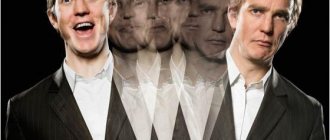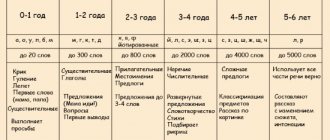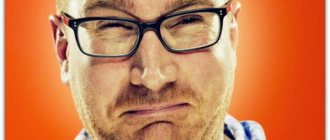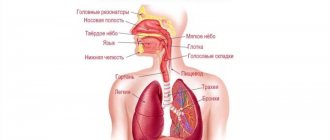Developed facial expressions are a useful quality not only for a theater artist, but also for any person who, due to duty or hobby, often has to perform in public. Mimic expressiveness plays no less a role than speech, since it reflects the emotional life of the artist during the performance and emphasizes the meaning put into the words.
In everyday life, facial expressions are a means of non-verbal communication between people: it is through them that we understand what emotions a person experiences before he begins to speak. The instant and uncontrollable facial reaction of the facial muscles to any event makes facial expressions the most accurate indicator of a person’s mood and his attitude towards something. However, future artists often require additional development of facial expressions.
“The face is the mirror of the soul.” Cicero
If in life facial expressions are our constant companion, then in imitation of life, which is almost any public performance, the absence or lack of facial expressions is the first sign of falsehood.
Imagine Romeo declaring his love with a straight face, or Hamlet during his famous monologue “To be or not to be” with a facial expression a la “Semyon Altov”. Any tragedy with such a game is doomed to turn into a comedy, and vice versa - a comedy risks becoming tragically boring. That is why the facial expressions of actors require development, and this is given the same great attention as the development of correct speech.
Who exercises their face?
Do you think anyone? - You're wrong.
Here is a little girl spinning around the mirror. And her mother reproaches her: “You can’t do this! Stop showing off! Decent girls don’t do that!” And then the girl does it on the sly. When no one sees.
Or maybe he never does it anymore, feeling forbidden.
What does facial beauty depend on? Read about this in the article...
I don’t know what parents are afraid of when they forbid their children to study their faces and practice facial expressions. Maybe parents are afraid that the child will learn to manipulate parents using his face? That the child will deceive them?
Show sadness on your face without being sad. Pretend obedience without disobeying. Maybe so?
However, parents are just accustomed to it this way. As children, they were taught to “make faces” in front of the mirror. And their parents weaned them off...
- So uncivilized! It's not supposed to be like that! You can not do it this way!
They even came up with a legend about Narcissus, who looked at his reflection for a long time and became a flower.
Unusual sensations
It happens that a person can feel phenomena in the face and head that are unusual for the usual state. They are called paresthesias and are manifested by the following symptoms:
- tingling;
- burning;
- "goosebumps"
- numbness;
- itching and rashes.
Often facial paresthesias have an organic basis and become a sign of the disease:
- neuritis, neuralgia of the cranial nerves;
- multiple sclerosis;
- stroke and other circulatory disorders in the brain;
- shingles;
- migraine;
- diabetes;
- epilepsy;
- hypertension.
In certain cases, unusual sensations are observed in certain parts of the face. For example, similar manifestations in the language may appear for the reasons listed above, but often have a different etiology. They are provoked by cancer of the tongue and larynx, as well as trauma by a splintered tooth or denture.
Dental procedures cause numbness and other unusual feelings, especially after tooth extraction. Another reason for their appearance may be an uncomfortable position during sleep or an unsuitable pillow. But the sensations caused by such phenomena usually pass soon.
Another group of provoking factors consists of psychogenic and neurogenic disorders.
What does facial beauty depend on?
I’m writing this article on my laptop in a cafe, drinking my favorite coffee with milk... Three girls are talking about something at the next table.
It was observing them that gave the idea for the article.
They seem to be beauties. But no.
Beautiful bodies. Wasp waists, emphasized breasts. Apparently, these girls are taking care of their bodies.
Maybe yoga, dancing, running, gym - I don’t know. Plus, probably, the diets are different. It’s obvious that they are working on the bodies, trying.
Wonderful hair, each has its own style. There were invisible traces of makeup on their faces; everyone tried to look good.
But I’m sure that none of them is working on developing and changing their faces.
One or two smiles on duty (for photographs) - that’s the entire arsenal of facial expressions.
Each of them could become a beauty. The kind of girl you would like to sit with in a cafe over a cup of tea or coffee.
Be enchanted... And fall in love...
And everything is there for this.
All that remains is to work on the face
Above the expression of lips, eyes, eyebrows.
And if they worked on their face, not only with the help of cosmetics, they would be beauties.
But... Alas...
Lazy jaw
In facial wrinkles and nasolabial folds, which appear much more noticeable on one side than on the other, our teeth are often, oddly enough, to blame. Or rather, how exactly we chew food with them.
By doing this on only one side of the jaw, we unknowingly “chew” on ourselves not only extra folds and wrinkles, but also orthodontic problems.
Due to the fact that on one side the teeth are worn out and the muscles are strained much more than on the other, a serious misalignment of the jaw occurs and asymmetry increases.
Brightly marked jowls, wrinkles and nasolabial folds appear on the chewing side. In addition, a large load on the temporomandibular joint can lead to damage and functional impairment.
How are faces formed?
Those people who are often dissatisfied develop dissatisfied faces.
Sad faces come from those who are most often sad. Closed faces, without emotions - in cautious, distrustful people. And cheerful faces appear on cheerful people.
It is important to constantly monitor your facial expression.
Always. Or as often as possible.
And do not allow dissatisfaction, disappointment, sadness. Even in the most ordinary situations.
When we drink tea in a cafe, for example.
And if it is allowed, then so that in this case the face remains beautiful.
(Well, even if it’s ugly, whatever you want!)
It is important to study our face in advance, how we talk, how we rejoice, are surprised, and admire.
Are we so offended?
Is this how we show dissatisfaction?
How are we offended? How do we express dissatisfaction?
And if we don’t like some emotion, it can be changed, developed, trained.
This is where I often hear criticism. That, they say, this is dishonest, unnatural, wrong. What, they say, to whom it is given is given, and if it is not given, then it is not given! You can't learn this!
Usually, I don't insist or argue.
Yes, some are more fortunate, and some are less fortunate.
I know beauties who, secretly from everyone, spend hours in front of the mirror, studying themselves, their faces.
Experimenting. Trying new emotions. Charming yourself. Talking to yourself, imagining your interlocutors and their faces.
But no one admits this.
Why? Because it is very intimate. Just like sex with yourself. Nobody admits to this either? Right?
But if you see a wealth of emotions on your face, beautiful expressions on your lips and eyes, this is most likely the result of training.
Smart girl!
It is clear that it is not only the face that needs to be dealt with
Moreover, do not go to extremes by doing only facial expressions.
It is important to learn other skills as well.
Including public speaking, of which I am a trainer.
- Read my Book “Oratory for Beginners”
I personally know such beauties who work on their faces.
I first heard about this when I was a student, and I couldn’t believe my own ears.
And then he bought himself a large mirror. - Guess what for? “And I even skipped the lecture and stayed in the dormitory so that no one would see me practicing my smile.”
Then there were gestures. The ones I have now.
Actors, artists, fashion models are involved in the development of facial expressions...
Have you seen the wonderful film “The Artist”? If not, be sure to check it out! I recommend. The film has no words, so everything is based on facial expressions, gestures, and emotions.
Time will pass…
I think time will pass and my article will become completely irrelevant.
The world of girls, and guys too, will be engaged in training and developing their faces.
There will be advertising for trainers in facial expressions, just like there are now for yoga, shaping and public speaking.
In the meantime, as they say: “Everything is in our hands”
Go to the mirror right now. Explore all your emotions!
All! And anger, and joy, and irritation - too!
And also very important: speak in front of the mirror! Learn to be surprised, beautifully. Learn to express gratitude. Interest.
After all, a face in motion happens much more often than a static one.
Smile from the corners of your eyes. Smile at the corners of your lips.
Learn to change your face and smile during a conversation.
Smile at the corners of your lips. Smile from the corners of your eyes.
And train, train, train...
And further. About women's faces. If a woman wants to please men, what kind of facial expression should she train? A?
Right. Men are attracted to faces that convey a desire for sex. Such persons also need to be trained, if this is important.
What faces are repulsive?
Fear and fright make their faces look so bad that you don’t want to approach them. This is a defensive reaction. Mask. And, unfortunately, these are the faces that people most often meet.
Fear, fear, discontent disfigure our faces. And, if such a condition is not uncommon in a girl, it leaves a reliable imprint on her face. And making such a face beautiful will be more and more difficult.
Diagnostics
Determining the cause of facial asymmetry is most often carried out by dentists or neurologists. If appropriate symptoms are detected, the patient is referred to otolaryngologists, oncologists, endocrinologists, and other specialists. The examination plan may include the following diagnostic procedures:
- Questioning, physical examination
. The doctor establishes the time and circumstances of the onset of the symptom and asks the patient about other manifestations of the disease. Evaluates the severity of asymmetry at rest, during facial and chewing movements. Detects other changes: swelling, redness, blanching, increased local temperature, tumor formations. - Dental examination.
Includes studying the condition of teeth, gums, hard and soft palates, mucous membranes of other areas, and bones of the facial skeleton. Allows you to confirm the presence of diseased teeth, inflammation, injury, suppuration, tumors. - Neurological examination.
The specialist studies the innervation of the facial muscles, asking the patient to perform certain movements: wrinkle his forehead, raise and lower his eyebrows, puff out his cheeks, show his tongue, bare his teeth, follow the movements of the neurological hammer with his eyes. The neurologist then palpates the available nerve exit points. - Otorhinolaryngological examination.
Provides for special research. If pathology of the paranasal sinuses is suspected, echosinusoscopy or diagnostic puncture can be performed. In case of complaints of hearing impairment, audiometry, tuning fork examination, etc. are performed. For vestibular disorders, vestibulometry and rotational tests are recommended. - Radiography
. Taking into account the identified pathological changes, the patient is prescribed an X-ray of the tooth, an X-ray examination of the jaw or paranasal sinuses. In some cases, radiographs of the skull and cervical spine are necessary. - Ultrasonography
. During the examination, sonography of the salivary glands, paranasal sinuses, and soft tissues may be performed. If signs of brain compression are detected, echoencephalography is indicated. - Other visualization techniques
. Most often, CT or MRI are used to clarify the diagnosis and to study in detail the nature of the changes, the volume and location of the pathological focus. For neurological pathology, PET-CT and SPECT of the brain may be prescribed. - Lab tests
. A general blood test determines the presence and severity of inflammation; the results of a microbiological study determine the pathogen and its sensitivity to antibiotics. In case of space-occupying formations, histological and cytological examination of smears, punctures, and biopsy specimens is carried out.
Elimination of facial asymmetry
By improving character we improve appearance
Our behavior and emotions are connected with our appearance, our face. The most common emotions shape character and shape our face. Therefore, there is a direct connection between our character and our faces. So be kind! Avoid irritability. By improving our character, we improve our appearance.
I led the practical psychology club for eight years. We conducted many different classes and trainings, completely different. But there were also activities aimed at inner and outer beauty, at harmony. And I saw how people “bloomed” and their faces changed.
There is a wonderful poem on our topic of human faces.
About the beauty of human faces. The poet, Nikolai Zabolotsky , perfectly revealed the theme of the beauty of human faces. Comparing faces with house facades is a wonderful metaphor, you’ll agree...
About the beauty of human faces
Nikolay Zabolotsky
There are faces like lush portals, Where everywhere the great appears in the small. There are faces - like miserable shacks, where the liver is boiled and the rennet gets wet.
Other cold, dead faces are closed with bars, like a dungeon. Others are like towers in which no one has lived or looked out of the window for a long time.
But I once knew a small hut, It was unprepossessing, not rich, But from its window the breath of a spring day flowed onto me.
Truly the world is both great and wonderful! There are faces - similarities to jubilant songs. From these notes, shining like the sun, a song of heavenly heights is composed.
There is one more poem. Vladimir Vysotsky. Still the same topic, but presented differently. If you are not interested, you can scroll through and read the article further.
Excessive emotionality
Usually our emotions are reflected in facial expressions.
We can even carry on a conversation without uttering a word - frowning eyebrows or narrowed eyes will say everything for us. From a communication point of view, active facial expressions are good; people like the emotional involvement of their interlocutor. However, this can seriously affect our appearance. “They are busy with their faces,” the actors say about those who like sweeping, overly active facial expressions. They know: you won’t get an Oscar for over-acting emotions with your face, they are too pretentious.
If active facial expressions are useless even on stage, why use them in life? After all, the skin “remembers” our every facial movement.
MASKS
Vladimir Vysotsky
Laughing out loud among the distorting mirrors, I must have been cleverly played: Hooked noses and grins from ear to ear - Like at the Venetian carnival
What should I do? Run, but quickly?
Or maybe have fun with them? I hope I am under the mask of animals. Many have human faces.
Everyone is wearing masks, wigs - all as one. Who is fabulous, and who is literary. My neighbor on the right is a sad harlequin, Another is an executioner, and every third one is a fool.
I join the round dance laughing, But still I feel uneasy with them, - What if someone likes the executioner’s mask and doesn’t take it off?
What if the harlequin becomes sad forever, Admiring his own sad face? What if a fool forgets his stupid appearance on his normal face?
A ring closes around me, They grab me and drag me into a dance. Well, well, my usual face. Everyone else took it for a mask.
Firecrackers, confetti! But everything is not like that... And the masks look at me reproachfully. They shout that I’m out of step again, that I’m stepping on my partners’ feet.
Evil masks laugh at me, Cheerful ones begin to get angry, Hiding behind a mask, as if behind a wall, Their true human faces.
I'm chasing the muses, But I won't ask any of them to open up: What if the masks are thrown off, and there are still the same half-mask, half-face?
I finally got into the secret of the masks. I am sure that my analysis is accurate: And others have a mask of indifference - Protection from spitting and slaps.
But if you were a scoundrel without a mask, wear it. And you? Everything is clear to you. Why hide under someone else's face, When your own is truly beautiful?
How can I not miss a kind face? How can I guess the honest ones for sure? They decided to wear masks so as not to break their faces on the stones.








